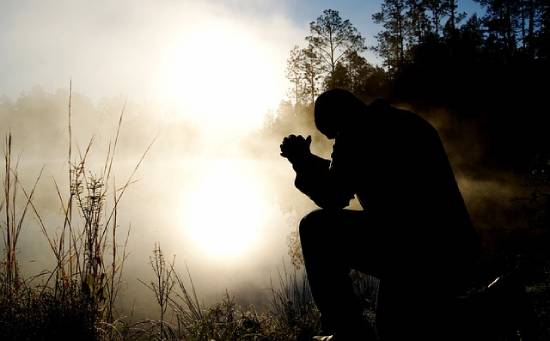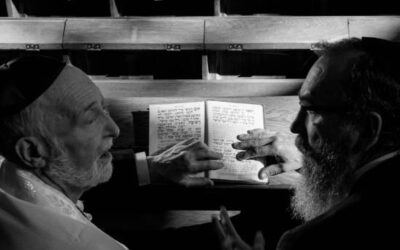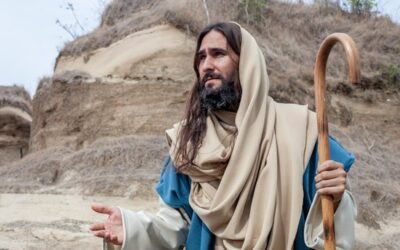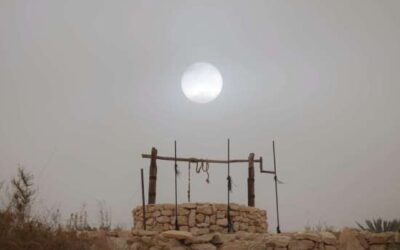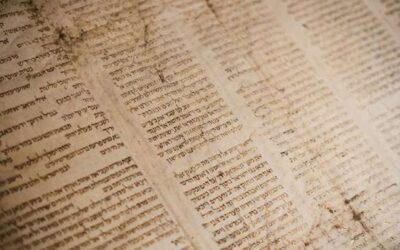What Jesus’ Example Can Teach Us About Prayer and Fasting
Prayer and fasting were a central part of the lives of the greatest Bible heroes.1
Jesus was no different. He fasted and prayed to prepare Himself spiritually, to bless others, and to fuel His relationship with God.
Fasting and prayer can help us do the same!
Let’s see how Jesus’ example of prayer and fasting can help us form a deeper relationship with God.
Follow along as we explain:
- What prayer and fasting are
- Why Jesus practiced these spiritual disciplines
- How Jesus prayed and fasted
- Instances of Jesus praying and fasting
- What Jesus teaches us about these concepts
- How you can apply Jesus’ example to your own life
Let’s start by understanding the context behind prayer and fasting in Bible times.
Understanding Prayer and Fasting

Photo by Kim Cruickshanks on Unsplash
Prayer is the act of communicating with God, and fasting is the act of abstaining from something (traditionally, food) for a period of time.
Prayer was expressed in a variety of ways: sometimes in groups (Esther 4:16), sometimes alone (Daniel 6:10-13). It was done while standing up, kneeling, and reclining.2 It was often done multiple times a day, especially in the morning, noon, and night and before meals.3
These prayers typically centered around praising God, making requests of Him, and praying for the coming of God’s kingdom.4
Fasting, like prayer, was also expressed in different ways. Some people fasted from food, some from food and water, while some ate sparingly, and others restricted themselves to simple fare.
In most cases, fasts were short and allowed drinking water.5 Because the people of Israel lived in a warmer climate, drinking water was a necessary part of avoiding dehydration.6 Scholars also suggest that periods of fasting may have—in most cases—been restricted to daylight hours.7 In other words, people would go without eating during the day and would break their fast at night.
Most Jews at this time would also pair their fasting with service to the poor, sometimes giving the food they didn’t eat to those in need.8
Fasting was done in response to great need—whether that need was physical or spiritual.9 It was done to demonstrate humility (Psalm 69:10); and to ask for God’s deliverance and guidance (Ezra 8:23; Matthew 17:21). It was done for special occasions like the Day of Atonement as well as personal reasons.10
Overall, fasting helped people focus their attention on God.
This is because it removed the distraction eating could be, and gave them the time they would have spent eating to spend with God, connecting with Him through prayer. It also attuned people’s desire toward God and helped them depend on Him fully for their needs.
Fasting helped them quiet their minds from everyday concerns to hear and follow God’s plan.
This may be why so many people fasted in the Bible in times of spiritual or emotional crises—when they wanted to repent of sin, when they wanted answers to difficult questions or prayers, or as a means of dealing with grief.11
Fasting was their way of handing those problems over to God and asking for His leading.
Bible scholar, Ángel Manuel Rodríguez, phrases it this way:
“In fasting, we place our lives exclusively into the merciful care of God. It expresses a total and absolute commitment, a loving and trusting surrender of our lives to God as the only one who can rescue us from the oppression of sin.”
The practices of fasting and prayer are personal. This is why there were many expressions of prayer and fasting, just as there are today. What stays the same, however, are the timeless principles of prayer and fasting we get from Biblical examples—particularly, Jesus’ example.
First, let’s talk about why Jesus practiced these spiritual disciplines.
Why Jesus prayed and fasted
Jesus prayed and fasted to get in touch with and form a deeper relationship with His Father, God.
He would pray to:12
- Glorify and praise God
- Ask for power to resist temptation and overcome evil
- Thank God for blessings
- Ask for strength to do God’s will
For Him, prayer was about more than asking God to grant His requests. It gave Him the opportunity to grow and maintain His relationship with God.13
Relationships aren’t just based on the things you ask the other person for, after all. They’re built on the love and trust you develop after talking to and spending time with each other (Exodus 33:11; Psalm 28:7).
The Bible isn’t as direct in explaining why Jesus fasted. But it’s possible that we can see why Jesus fasted when we look at the results of His fasting—it helped Him resist temptation and cast out demons (Matthew 4:1-11; Matthew 17:21). These things can only be done when empowered by the Holy Spirit, which can only be received by those in an intimate relationship with God.
How Jesus prayed and fasted
The Bible gives us a couple of details regarding how Jesus prayed and fasted.
He:
- Prayed often:14 Jesus prayed while He was alone, while He was with a crowd, while He ate, while He performed miracles, when He was feeling thankful, and when He was feeling discouraged.
- Prayed earnestly:15 Jesus prayed with His whole heart. While in the Garden of Gethsemane, He openly expressed His fear and anguish to God. It wasn’t for show—He prayed intensely and earnestly for God’s guidance.
- Set aside time for private prayer:16 Jesus would get up early or leave crowded areas to get a moment to Himself for prayer. He would go to secluded areas out in nature—typically a mountain.
- Prayed for others:17 Jesus didn’t just pray for Himself. Much of His time was spent praying on the behalf of others.
- Fasted for connection:18 Jesus fasted for 40 days before he began his ministry to commit His dependence and will to God.
Now that we’ve covered the “how” let’s address “when” Jesus fasted and prayed in the New Testament.
Instances when Jesus prayed and fasted
While the Bible might not have recorded every time Jesus Christ prayed and fasted, it does give us a good understanding of how Jesus’ prayers and fasts shaped His ministry:
Jesus fasted and prayed:
- For 40 days in the wilderness (Matthew 4:1-2)
- To cast out demons (Matthew 17:21)
Jesus prayed:
- At His baptism (Luke 3:21)
- Before going to Galilee (Mark 1:35, 36)
- While He was alone (Luke 5:16)
- Before choosing the 12 disciples (Luke 6:12-13)
- Before feeding the 5,000 (John 6:11) and the 4,000 (Matthew 15:36)
- Before walking on water (Matthew 14:23)
- While healing a man who was deaf and mute (Mark 7:31-37)
- Before asking the disciples who he was (Luke 9:18-20)
- At the Transfiguration (Luke 9:28-29)
- After the group of 72 disciples returned successfully (Luke 10:21)
- Before teaching the disciples how to pray (Luke 11:1)
- Before resurrecting Lazarus (John 11:42-44)
- For children (Matthew 19:13-15)
- To glorify God (John 12:27-28)
- At the Lord’s Supper (Matthew 26:26)
- For Peter (Luke 22:31-32)
- Before and during his time in the Garden of Gethsemane (John 17:1-26; Matthew 26:26-46; Luke 22:40-45)
- On the cross (Matthew 27:46; Luke 23:46)
- To bless bread after His ascension (Luke 24:30)
- To bless His disciple’s efforts in spreading the Gospel (Luke 24:50-53)
Let’s zero in on some of the Bible verses listed here.
Fasted for 40 days (Matthew 4:1-2)
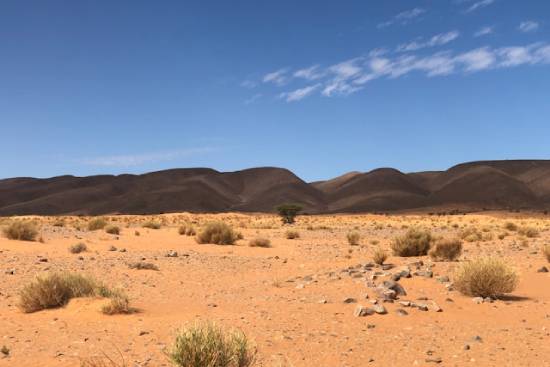
Photo by Maxime Jacquet on Unsplash
Jesus was called by the Holy Spirit to fast for 40 literal days in the desert.
The story that goes along with His fast suggests that this extreme form of fasting was not an act of piety or a display of supernatural power, but rather, Jesus’ way of placing His trust in God.
Jesus was tempted by Satan to use His own power to save Himself, instead of relying on God, but Jesus refused (Matthew 4:3-11). Each time Satan tempted Him, He professed His faith in God and God’s Word.
While He was in the desert, He was alone, free from distraction, and free to commune in privacy with the Father. And the act of fasting was just one more way He was able to put His cares aside to adopt total faith and reliance on God (Jeremiah 29:13-14; Proverbs 3:5-6).
Though Scripture doesn’t have much to say about Jesus fasting besides this story, we can see how this experience might have shaped Jesus’ ministry and confidence in His relationship with God the Father.
The fact that He did this fast right before He started His ministry offers further evidence that this was an act of spiritual preparation.
Prayed while He was alone (Luke 5:16)

Photo by Karsten Würth on Unsplash
Jesus spent most of His time helping other people, and yet, there were times when Jesus had to get away from the crowds and spend a private moment in prayer.
One time, when people looking for healing were beginning to crowd Jesus, Jesus withdrew to pray by Himself.
Private prayer offered Jesus a chance to talk to the Father one-on-one and to share His feelings and struggles, as well as ask for strength. In other instances of Jesus’ private prayer, like in the Garden of Gethsemane, we see Him pouring out His heart to God (John 17:1-26; Matthew 26:36-46).
Regular time in private prayer likely gave Jesus the chance to rest from the intense demands of His ministry and experience the refreshing and encouraging presence of the Lord God (Isaiah 40:31).
Prayed before choosing the 12 Disciples (Luke 6:12-13)
Jesus also spent extra time in prayer before setting off on an important mission.
Jesus prayed the night before selecting the men that would become His disciples.
He went to a mountaintop, possibly to find a secluded spot where He could immerse Himself in the peace and privacy of God’s presence.
And He didn’t just spend a couple hours there.
No, He prayed all night long.
It was likely this time that prepared Him for the task of selecting the disciples, ensuring that His will was aligned with God’s in choosing the leaders that would guide the Early Church after Jesus’ ascension.
Prayed before feeding the 5,000 and the 4,000 (John 6:11; Matthew 15:36)
Jesus prayed before feeding the 5,000 and the 4,000.
He had a regular practice of praying before eating (Matthew 26:26; Luke 24:30). This was done to thank God for the food and to ask for God’s blessing that the food might nourish the body.
He did this both for small meals and the miraculous meals of the 5,000 and the 4,000.
Like one might ask and thank a friend for something to eat, Jesus remembered to thank the Father for His provision and care. And it is through Jesus’ relationship with God, that Jesus could ask God to help Him feed a multitude.
Prayed at the Transfiguration (Luke 9:28-29)
Once again, Jesus retreated to a mountaintop to pray. But this time He brought some of His closest disciples—Peter, James, and John—along.
We’ve already talked about mountaintops being an area of seclusion and privacy. But what does it mean that Jesus brought His disciples to pray with Him?
Well, the Bible tells us there’s something special about praying with others.
“Again I say to you that if two of you agree on earth concerning anything that they ask, it will be done for them by My Father in heaven. For where two or three are gathered together in My name, I am there in the midst of them” (Matthew 18:19-20, NKJV).
That’s true of a lot of things, isn’t it? People are stronger together than they are apart.
In fact, God never meant any of us to tackle our Christian journey on our own. He asked us to join a group of like-believers, a Church, where we can help, strengthen, and encourage one another (1 Thessalonians 5:11).
Jesus saw that power in joining others in prayer. And it was this prayer that prepared Jesus to meet Moses and Elijah in the Transfiguration.
Prayed before the resurrection of Lazarus (John 11:42-44)
It was through prayer that Jesus maintained His connection with God.
In developing a deep relationship with the Father, Jesus was able to discern and do His will. He and the Father became of the same mind and purpose.
As He prayed before the resurrection of Lazarus He acknowledged that He understood God’s will in resurrecting Lazarus. He also confessed complete and utter faith in His relationship with God: “Father, I thank You that You have heard Me. And I know that You always hear Me…” (John 11:41-42, NKJV).
Jesus took the example of His parable about having the faith of a mustard seed, and prayed with faith, confident that He could depend on God to answer His prayer in bringing Lazarus back to life (Matthew 17:20-21; Mark 11:24).
Prayed for Peter (Luke 22:31-32)
Jesus didn’t just pray for Himself. He also made a habit of praying for others.
In this case, Jesus prayed for His friend and disciple, Simon Peter, that he might come back to Him even after denying Him three times.19
In this way, Jesus recognized the power of intercessory prayer to protect and strengthen others (Ephesians 6:18).
Prayed at Gethsemane (John 17:1-26; Matthew 26:36-46, Luke 22:40-45)
It’s worth noting that all Jesus did in response to the knowledge that He would be arrested and crucified was pray.
He again went to an area of seclusion, the Garden of Gethsemane, along with several disciples He had asked to pray with Him.
In this prayer, He submits Himself to God, asking that God’s will be done above His one.
Then He began to sweat blood. This was a physical representation of the spiritual and mental struggle he was going through.
He spoke honestly about His fear, asking God to lead and sustain Him through the painful fate He would experience on the cross.
In times of weakness and doubt, He knew He could find strength in talking to the Father (Psalm 118:14).
But in this prayer, He does more than just pray for Himself about the coming crucifixion. He earnestly prays for His disciples.
And He prays for us. Yes! He prays for all His believers:
“My prayer is not for [My disciples] alone. I pray also for those who will believe in Me through their message, that all of them may be one, Father, just as You are in Me and I am in You. May they also be in Us so that the world may believe that You have sent Me. I have given them the glory that You gave Me, that they may be one as We are one” (John 17: 20-22, NIV).
Even in the face of great suffering and physical and emotional anguish, Jesus has us in mind and lifts us up to His Father. What boundless love!
What Jesus teaches us about prayer and fasting

Photo by Tima Miroshnichenko
Jesus taught that prayer and fasting are about building our relationship with God.
They weren’t about showing off righteousness or performing works to earn God’s favor as the Pharisees believed.
As a matter of fact, Jesus spoke out against those who made a prayer a public display of righteousness:
“And when you pray, you shall not be like the hypocrites. For they love to pray standing in the synagogues and on the corners of the streets, that they may be seen by men. Assuredly, I say to you, they have their reward” (Matthew 6:5, NKJV).
Instead, Jesus calls us to pray earnestly and humbly:
“But you, when you pray, go into your room, and when you have shut your door, pray to your Father who is in the secret place; and your Father who sees in secret will reward you openly. And when you pray, do not use vain repetitions as the heathen do. For they think that they will be heard for their many words. Therefore do not be like them. For your Father knows the things you have need of before you ask Him” (Matthew 6:6-8, NKJV).
The prayer Jesus gives to the disciples is a great example of this.
It’s simple and to the point. And it’s all about being real with God.
It declares the glory of God while being honest about our own human shortcomings, expressing a need and desire to have a Christlike character and to do God’s will:
“Our Father in heaven,
Hallowed be Your name.
Your kingdom come.
Your will be done
On earth as it is in heaven.
Give us this day our daily bread.
As forgive us our debts,
As we forgive our debtors.
And do not lead us into temptation,
But deliver us from the evil one.
For Yours is the kingdom and the power and the glory forever. Amen” (Matthew 6:9-13, NKJV).
(To learn more about how awesome and intentional The Lord’s Prayer is, check out our article all about prayer next)
Jesus also cautioned people against making fasting a display of righteousness.
“Moreover, when you fast, do not be like the hypocrites, with a sad countenance. For they disfigure their faces that they may appear to men to be fasting. Assuredly, I say to you, they have their reward. But you, when you fast, anoint your head and wash your face, so that you do not appear to men to be fasting, but to your Father who is in the secret place; and your Father who sees in secret will reward you openly” (Matthew 6:16-18, NKJV).
Instead, Jesus calls us to keep fasting a private matter—one between us and God, “But you, when you fast, anoint your head and wash your face, so that you do not appear to men to be fasting, but to your Father who is in the secret place; and your Father who sees in secret will reward you openly” (Matthew 6:17-18, NKJV).
Now we know how Jesus says to fast and pray, but how do we actually apply this wisdom to our lives?
Let’s talk about that next.
How can we apply Jesus’ example to our lives?
In addition to following Jesus’ counsel on prayer and fasting, we can also do well to follow His example.
Of course, there are some exceptions—particularly concerning His act of fasting for 40 days.
This is because fasting for long intervals of time can be dangerous.20 In fact, medical professionals recommend consulting a doctor before undertaking fasting periods longer than 24 hours.21
We know Jesus and Moses fasted for 40 days (Exodus 34:28), but while they were specifically spirit-led and spirit-empowered to do so, it is not something God typically asks of His followers.
He values our health and safety and would be against any practice that could jeopardize our health, such as extreme fasting (1 Corinthians 6:19-20; Matthew 6:31-34). So while we probably don’t want to fast for 40 days like Jesus did, His example does provide us with good principles, most of which we can implement in our own spiritual journey.
Like Jesus, we can make a point to set aside special times for private and communal prayer to deepen our connection with God. We can also pray and fast in earnest, fully believing that God will hear us when we come to Him.
In the end, prayer and fasting are wonderful opportunities to draw closer to God. In the stillness of prayer and fasting, we can slow down and focus on getting to know God and letting Him get to know us. Through these experiences, we can learn to trust and depend on God and embrace His leadership in our lives.
This relationship is the very thing that transforms us into followers of Jesus.
Want to learn more about what prayer can do for you?
Times Jesus Prayed and Fasted:
Jesus fasted:
- For 40 days in the wilderness (Matthew 4:1-2)
- To cast out demons (Matthew 17:21)
Jesus prayed:
- At His baptism (Luke 3:21)
- Before going to Galilee (Mark 1:35-36)
- While He was alone (Luke 5:16)
- Before choosing the 12 disciples (Luke 6:12-13)
- Before feeding the 5,000 (John 6:11) and the 4,000 (Matthew 15:36)
- Before walking on water (Matthew 14:23)
- While healing a man who was deaf and mute (Mark 7:31-37)
- Before asking the disciples who he was (Luke 9:18-20)
- At the Transfiguration (Luke 9:28-29)
- After the group of 72 disciples returned successfully (Luke 10:21)
- Before teaching the disciples how to pray (Luke 11:1)
- Before resurrecting Lazarus (John 11:42-44)
- For children (Matthew 19:13-15)
- To glorify God (John 12:27-28)
- At the Lord’s Supper (Matthew 26:26)
- For Peter (Luke 22:31-32)
- Before and during his time in the Garden of Gethsemane (John 17:1-26; Matthew 26:26-46)
- On the Cross (Matthew 27:46; Luke 23:46)
- To bless bread after His ascension (Luke 24:30)
- To bless His disciple’s efforts in spreading the Gospel (Luke 24: 50-53)
- Esther 4:16; Daniel 6:10-13; Ezra 8:21-22. [↵]
- Ephesians 3:14; Judges 20:26; Luke 18:10-13. [↵]
- Psalm 5:3; Psalm 92:2; Psalm 88:1; Psalm 55:17; Daniel 6:10; Psalm 119:55, 62; Matthew 14:19. [↵]
- Ostberg, René, “Lord’s Prayer,” Britannica, July 29, 2024. [↵]
- Rodríguez, Ángel Manuel, “What is the purpose of religious fasting?” Biblical Research Institute, Sept. 13, 2001. [↵]
- Ibid. [↵]
- Ibid. [↵]
- Johnston, Madeline S., “Fasting with Balance,” Ministry Magazine, Jan., 1995. [↵]
- Leviticus 16:29; Acts 13: 2-3; Esther 4:16; Jonah 3:9. [↵]
- Leviticus 16:29; Daniel 10:2-3. [↵]
- Jonah 3:1-10; Esther 4:16; Nehemiah 1:4. [↵]
- Matthew 6:9-13. [↵]
- 1 Chronicles 16:11; Romans 8:13; Matthew 12:28. [↵]
- Luke 9:18; Mark 6:41; Hebrews 5:7; Luke 6:12. [↵]
- Matthew 26:36-39; Mark 14:32-36; Luke 22:39-44. [↵]
- Matthew 14:23; Luke 5:16; Mark 1:35; Mark 6:46. [↵]
- John 17:9,15, 20-23; Luke 22:31-32. [↵]
- Matthew 4:1-2; Matthew 17:21. [↵]
- Nichol, F. D., Seventh-day Adventist Bible Commentary, vol.5, p.868. [↵]
- “To Fast or Not To Fast?” National Institutes of Health. [↵]
- Sissons, Claire, and Mandy French, “All You Need to Know About Water Fasting,” Medical News Today, Oct. 18, 2023. [↵]
More Answers
Jesus and the Pharisees and Sadducees (Why They Opposed Jesus)
The Pharisees and Sadducees hated Jesus and wanted Him dead. This page looks at who they were and what motivated them to oppose Jesus.
The Many Names of Jesus in the Bible and What They Mean
The Many Names of Jesus in the Bible and What They MeanThe Bible includes a lot of names for Jesus, and they all reveal different facets of His identity, power, character, and mission. We’ve all had nicknames throughout our lives. They might be shortened versions of...
When Is Jesus Coming Back?
The Bible doesn’t tell us exactly when the Second Coming will occur, but learn about the signs that point to the nearness of the return of Christ.
After Jesus’ Ascension: What He Did Throughout the New Testament
After Jesus’ Ascension: His work Throughout the New TestamentWe first get to know Jesus, the Son of God and our Messiah, by reading the Gospel accounts of His earthly ministry. And after He died for our sins and was resurrected, He returned to heaven. This is known as...
Who is Jesus
Who Is Jesus, and Why Is He So Important to Us? Jesus Christ is the central figure of Christianity. Not only is He God’s Son and our Savior, He: Is who the Bible is all about Can give us eternal life Is part of the Trinity with God the Father and the Holy Spirit Is...
Jesus and John the Baptist: Their Relationship and Ministry
John the Baptist and Jesus were cousins, friends, and close coworkers in ministry. Learn the lasting significance of their relationship.
Why Did Jesus Have Disciples and Who Were They?
During Jesus’ ministry on earth, He selected certain individuals to help with and continue His work. They would be referred to during that time as His “disciples.”
Does Jesus Appear in the Old Testament?
Before His incarnation, Jesus also played an active role in the redemption and salvation of humanity. Discover the different ways He appeared in Old Testament stories.
Jesus’ Baptism: What It Means and Why It Matters
Jesus’s baptism marked the beginning of His earthly ministry. It was God’s big reveal regarding who Jesus is.
Why Is the Genealogy of Jesus Christ So Important?
Have you ever traced your genealogy back several generations? Did you ever try to find out if your ancestors did anything famous (or infamous)?
Jesus and the Woman at the Well: Breaking Down Barriers
Jesus’ meeting with the woman at the well reveals His heart for hurting people and His desire to break down prejudice. This page looks at how Jesus reached out to her.
Who is The Son of Man in the Bible?
In calling Himself the Son of Man, Jesus confirmed His role as humanity’s savior. Learn what else this title tells us about Jesus.
Who Was Mary, the Mother of Jesus Christ?
Mary, Jesus’ mother, was a humble woman, deeply committed to following God’s will for her life. Learn what the Bible says about Mary and what we can learn from her.
What Does the Bible Mean When It Calls Jesus the Son of God?
When the Bible calls Jesus the Son of God it’s referring to His divinity. Learn what makes this so significant and what it has to do with salvation.
The True Events Surrounding the Birth of Jesus
Jesus’ birth involved many strange events: a pregnant virgin, a stable birth, angels appearing to shepherds, and wealthy visitors. These help us understand His supernatural yet incredibly humble life.
An In-Depth List of the Prophecies About Jesus
How many prophecies of Jesus are in the Old Testament?
Can We Find Jesus Christ In the Old Testament?
Yes, you might be surprised to know that there are hundreds of verses in the Old Testament about Jesus.
The Parables of Jesus: What They Teach Us About Life
Have you ever been on the verge of sleep in the middle of a long lecture or sermon when suddenly the speaker takes a turn and begins to tell a story?
Didn’t find your answer? Ask us!
We understand your concern of having questions but not knowing who to ask—we’ve felt it ourselves. When you’re ready to learn more about Adventists, send us a question! We know a thing or two about Adventists.

